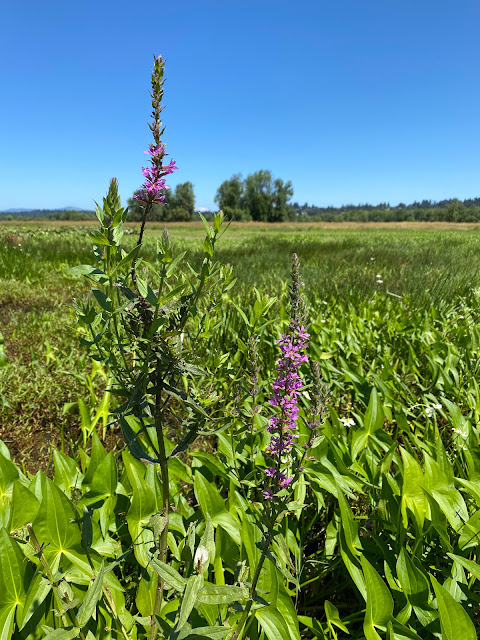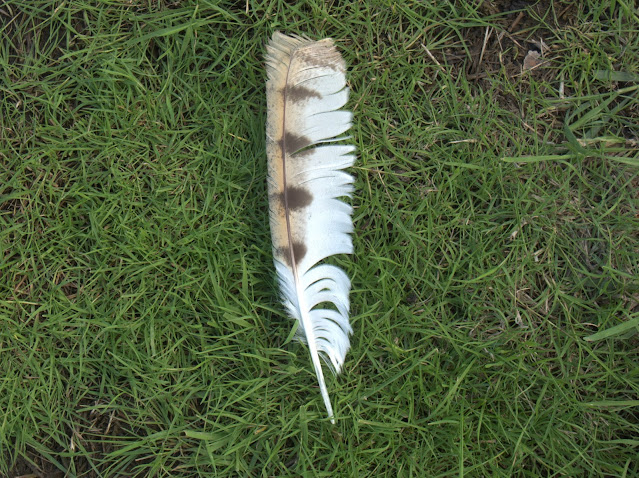Western Pond Turtles at Pierce
 |
Photo: View of the Columbia River Gorge from the shoreline of Pierce
|
Visiting Pierce National Wildlife Refuge is always a treat, and over the past month I was provided with the opportunity to visit several times to help with the Western Pond Turtle (Clemmys marmorata) habitat restoration project. Pierce is part of the Ridgefield National Wildlife Refuge Complex and is located in the Columbia River Gorge, just past Beacon Rock State Park. There is no visitor access to this refuge; therefore, it is a true sanctuary for wildlife.
Western Pond Turtles are listed as an endangered species in Washington State. As a mostly aquatic freshwater turtle, they are found in streams, ponds, lakes, and wetlands, except when they are nesting on land during the early summer. If you are lucky enough to spot a Western Pond Turtle, you will likely find them basking on the shoreline or on floating logs and debris.
 |
Photo: Britta launching the turtle floats into the lake
|
As part of our recovery management plan, we create basking structures (a.k.a. turtle floats) for the turtles to access from the water. This allows the turtles to bask safely offshore, reducing the threat of predation from terrestrial predators, and an easy escape into the water from raptors overhead. Last year as a Biological Technician for the US Fish & Wildlife Service, I got the opportunity to participate in the turtle float construction. This year, Britta Plumhoff, the seasonal Biological Technician, built her turtle floats out of recycled scrap wood and I was fortunate enough to help her launch the floats. I am happy to report that after several weeks of apprehension, the turtles are using the floats. As Britta and I will both attest, it is always a rewarding experience to physically build something with your own hands, especially if the end goal is to aid in the recovery of an endangered species.
Fence Construction at the High Tunnel
Speaking of building things, over the past few weeks the habitat volunteers, summer interns, and our Northwest Youth Corps (NYC) members assisted in the construction of a fence around the high tunnel. Unfortunately, due to repeated rabbit predation of our newly propagated plants, we were forced to build a structurally sound "rabbit proof" fence to avoid any further loss.
 |
Photo: Volunteer Dave teaching the interns and NYC how to properly space T-posts
|
We were able to reuse old T-post fencing and utilize most
of the fencing materials from previously purchased Refuge supplies. Reusing these materials helped to keep the cost of the project down and limit the amount of waste.
 |
Photo: Keith Rutz, Habitat Restoration Coordinator, teaching NYC proper fence building techniques
|
In
order to keep the rabbits from digging under the fence, we installed
chicken wire fencing to the bottom of our four foot tall fence while also creating a one foot barrier
along the ground. Ground staples were used to secure the chicken wire fence to the ground.
 |
| Photo: Completed fence with chicken wire ground barrier |
|
|
 |
Photo: Single gate constructed on the east side of the high tunnel to provide easy entry
|
 |
Photo: Double gate constructed on west side of high tunnel to allow us to drive heavy equipment, such as a skid steer, into the high tunnel when needed
|
 |
Photo: A rabbit outside the newly completed fence
|
Beautiful wooden gates, built by the very talented craftsman and long-time volunteer Dave, were installed at both ends of the high tunnel providing easy access. Also, metal plates were placed in the ground beneath the gates to prevent the rabbits from squeezing or digging under the gates. Overall, the project was a huge success and we have kept the rabbits out of the high tunnel thus far. I cannot thank our dedicated volunteers, interns, and Northwest Youth Corps members enough for helping with this project, so thanks again! Now with restricted access, the rabbits appear to look longingly at their previous unlimited buffet of young plants.
-Justine Casebolt










Comments
Post a Comment